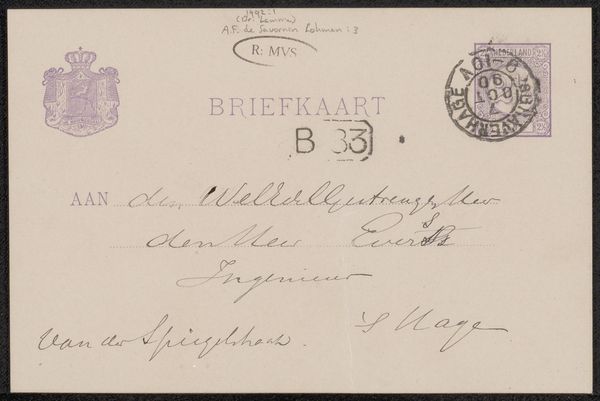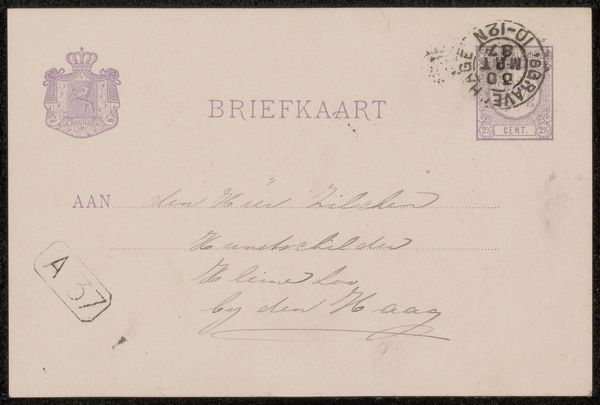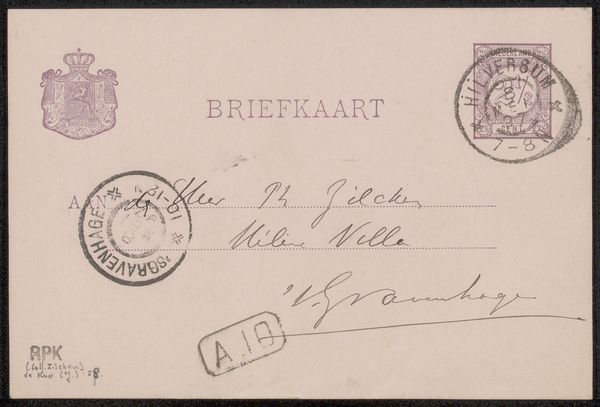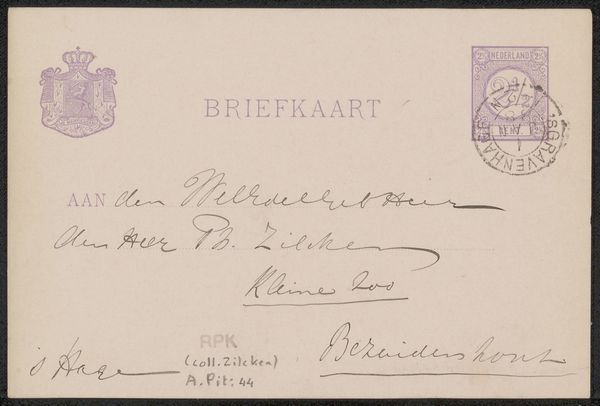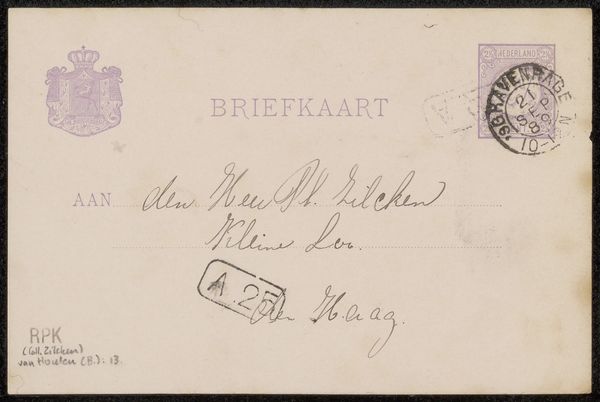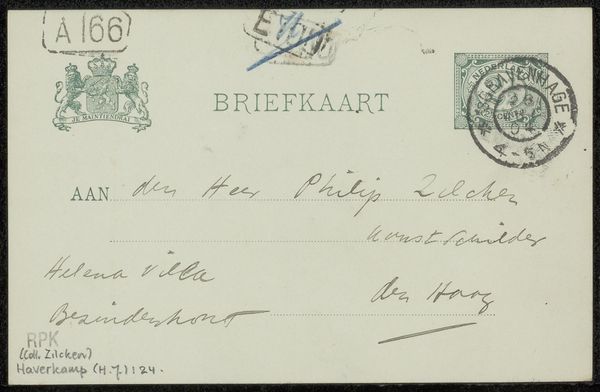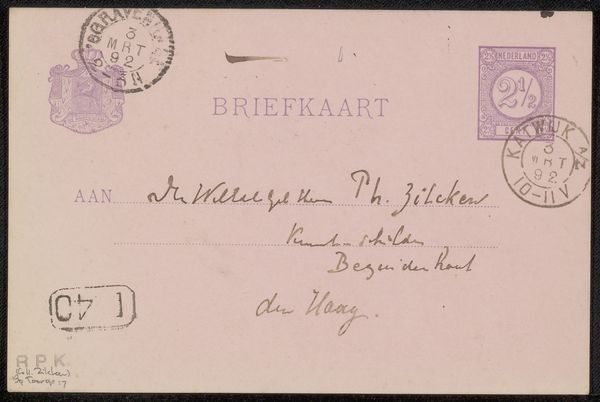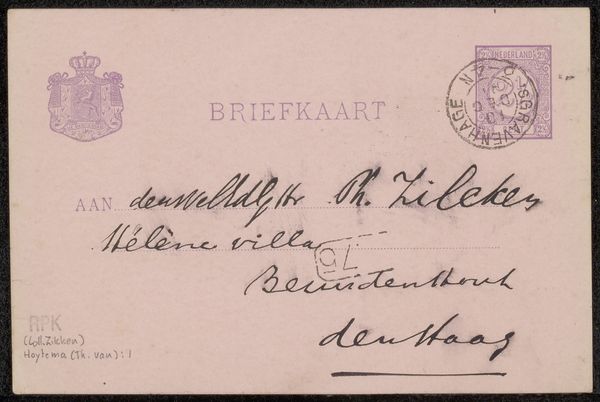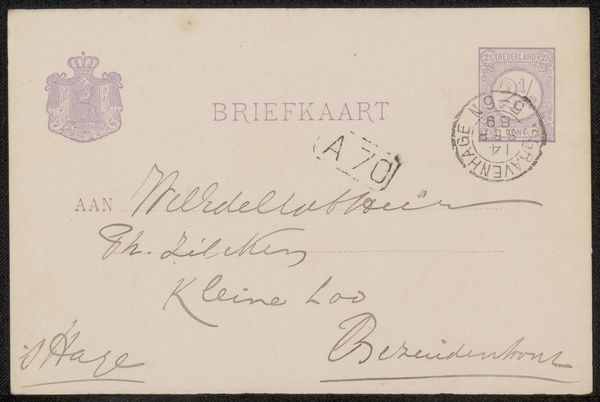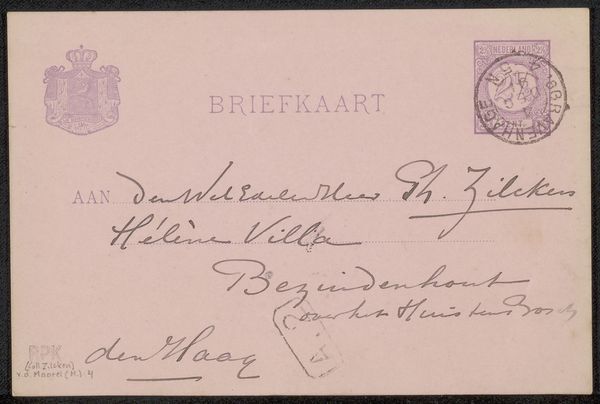
drawing, paper, ink
#
portrait
#
drawing
#
paper
#
ink
#
miniature
Copyright: Rijks Museum: Open Domain
Editor: This is "Briefkaart aan Philip Zilcken" – a postcard to Philip Zilcken - crafted before 1899 by Barbara Elisabeth van Houten. The materials are pretty straightforward – ink on paper. There's something so simple and intimate about receiving a handwritten letter. It makes me wonder about the stories behind it and how things were made then. What catches your eye about it? Curator: For me, it's the postcard itself that fascinates. Consider the materiality: the cheap paper stock meant for rapid, widespread circulation. The printing of the crest and "BRIEFKAART" speaks to a nascent postal industry, mass production influencing even the most personal communication. Ink, of course, a common medium, but each stroke unique to van Houten's hand. It bridges mass production and individual expression. How does the handmade text interact with printed elements, in your opinion? Editor: It's like a clash between the industrial and personal, which is compelling. Seeing them on the same surface highlights how technological progress touches even the most personal forms of interaction. Curator: Precisely. The postal system itself represents a societal shift – enhanced communication networks, increasingly mobile populations. A postcard wasn't just a message, but a commodity facilitated by an entire system of production and labor. Think of the postal workers, the paper mills, the printing presses involved. Editor: That shifts my perspective a lot. I was only thinking about sender and receiver, not the larger structure! Curator: And what of Zilcken, the recipient? His place within that same social fabric? Van Houten wasn’t just sending sentiments, but engaging in a material exchange deeply embedded within industrial processes and evolving social practices. It becomes much more complex. What's your understanding now of how material and message work together here? Editor: I think it’s cool how everyday objects such as this one can reveal larger social structures. Next time I send a letter, I'll give some thought to all that labor and those networks that make it possible. Thanks. Curator: Indeed, the overlooked details often speak the loudest. A simple piece of mail that encapsulates volumes of our understanding around consumption, making, and the impact of industry.
Comments
No comments
Be the first to comment and join the conversation on the ultimate creative platform.
